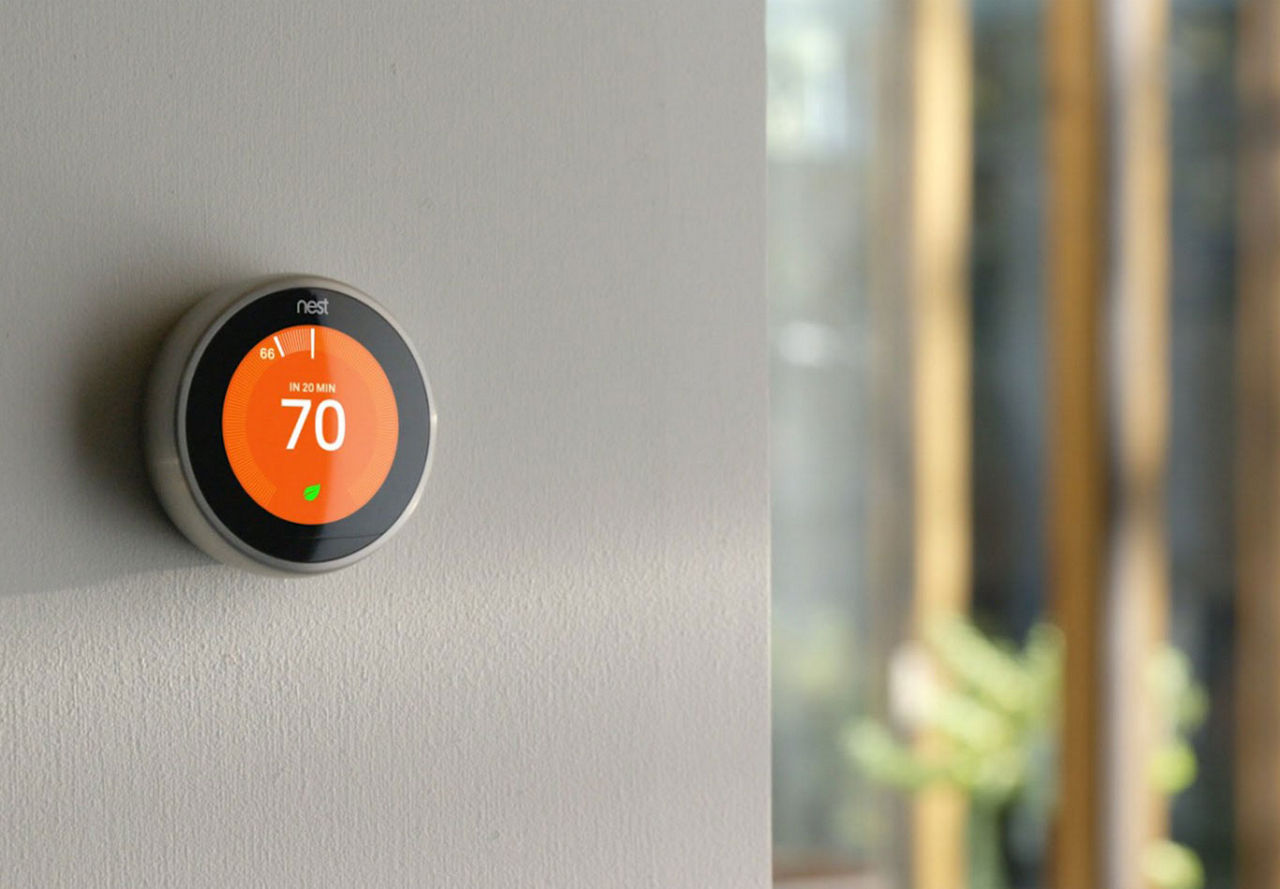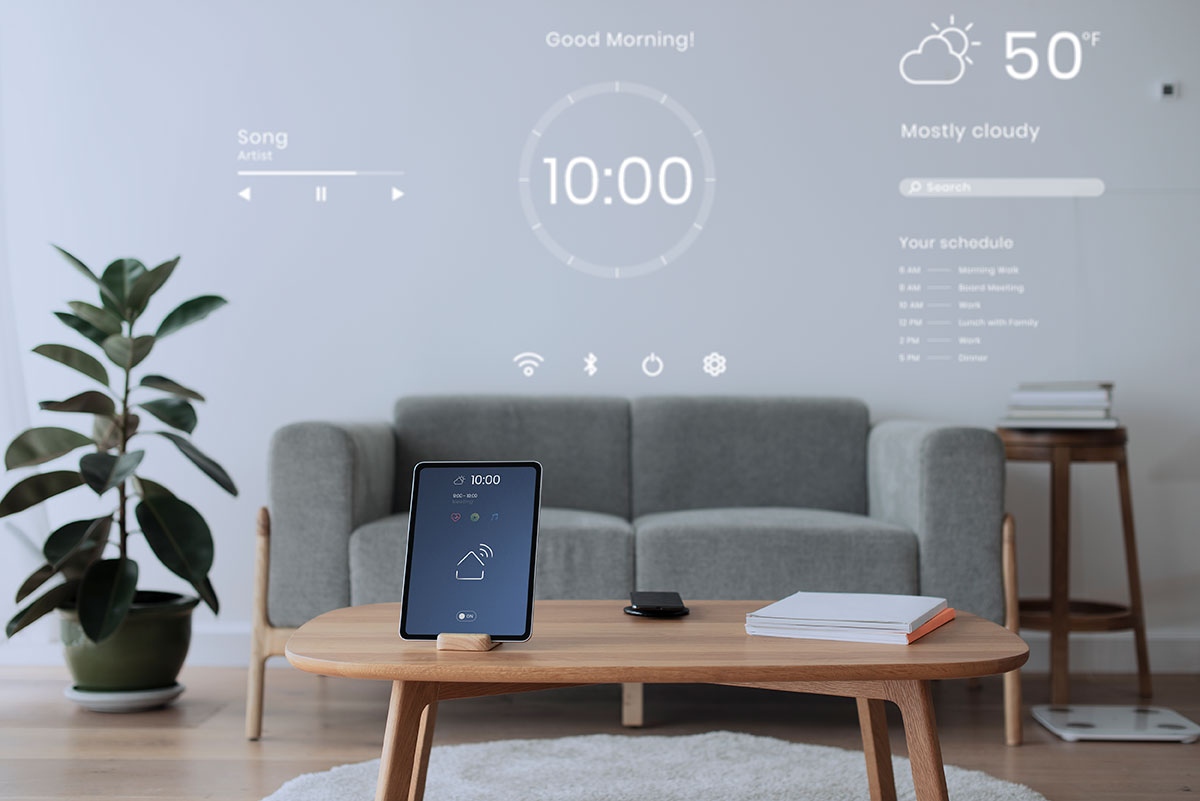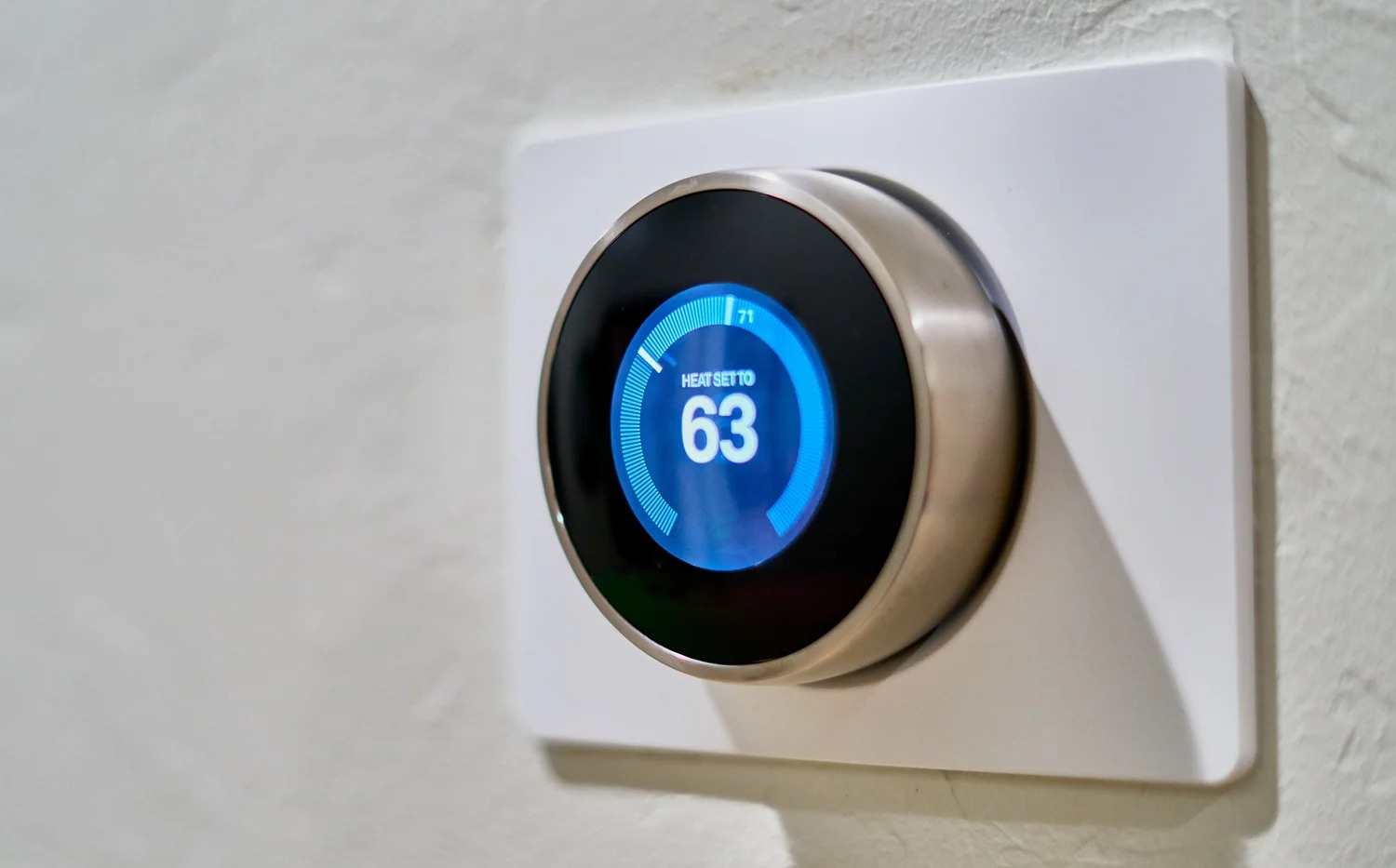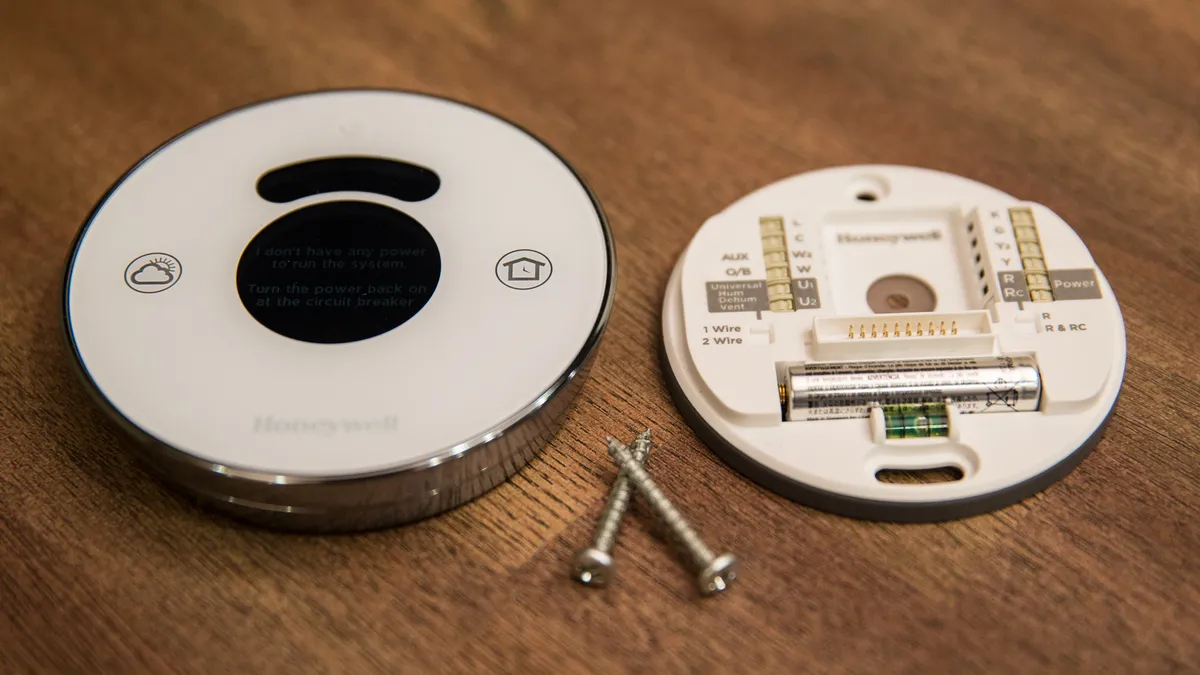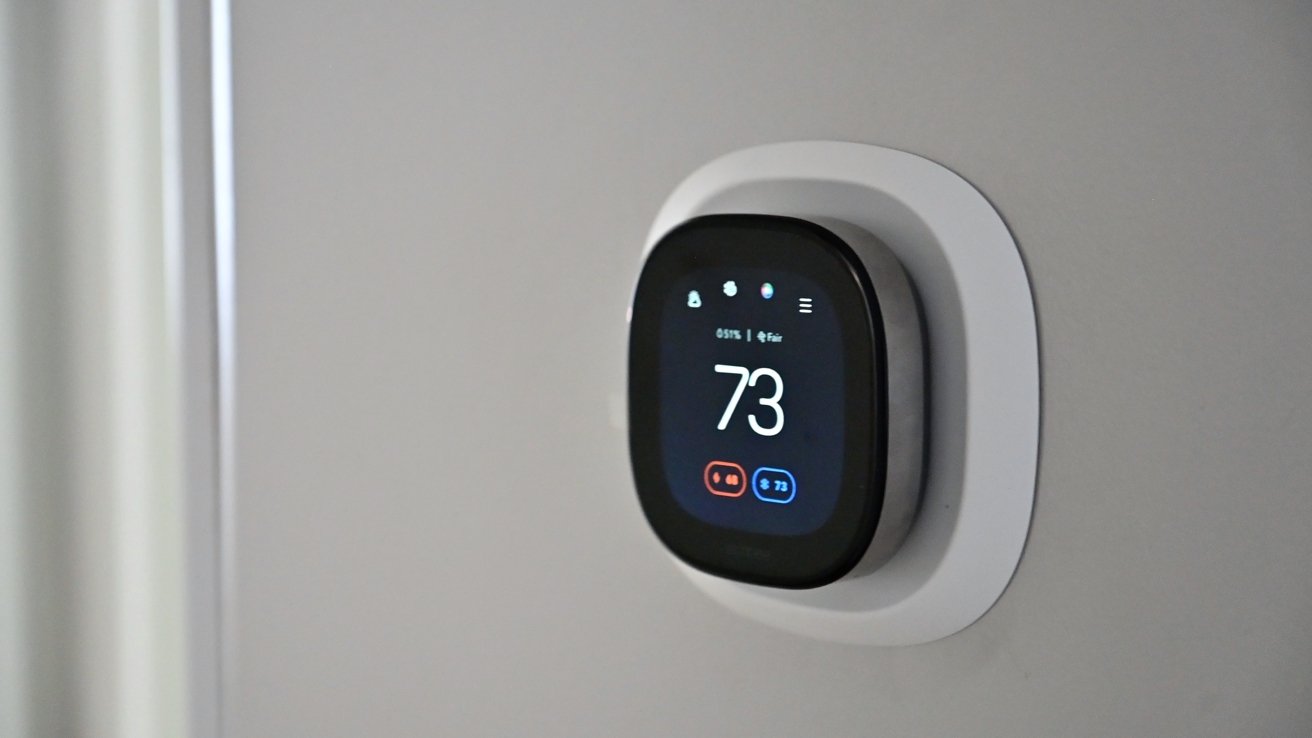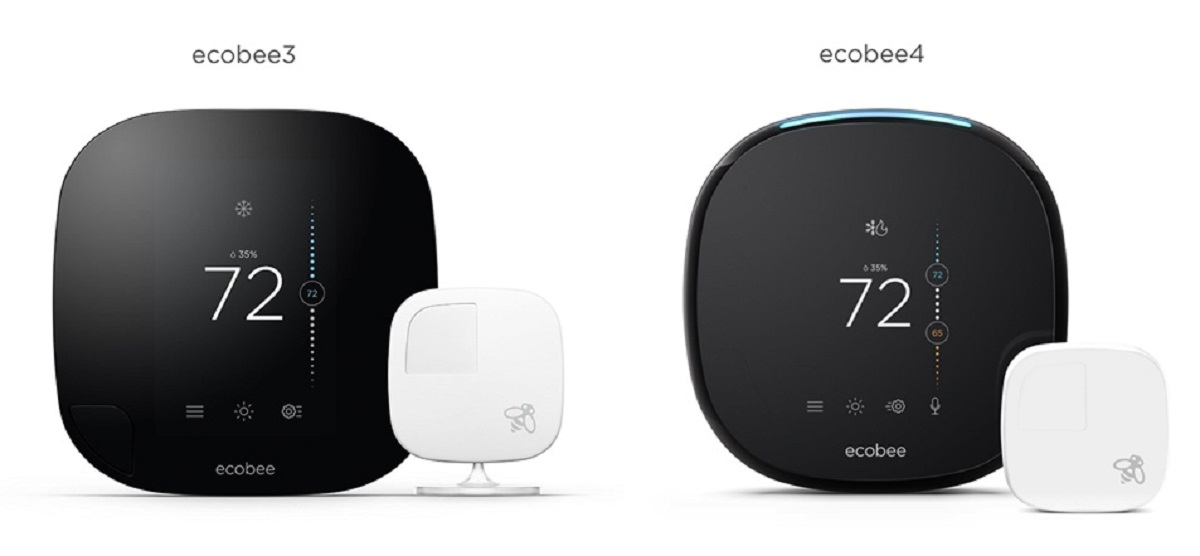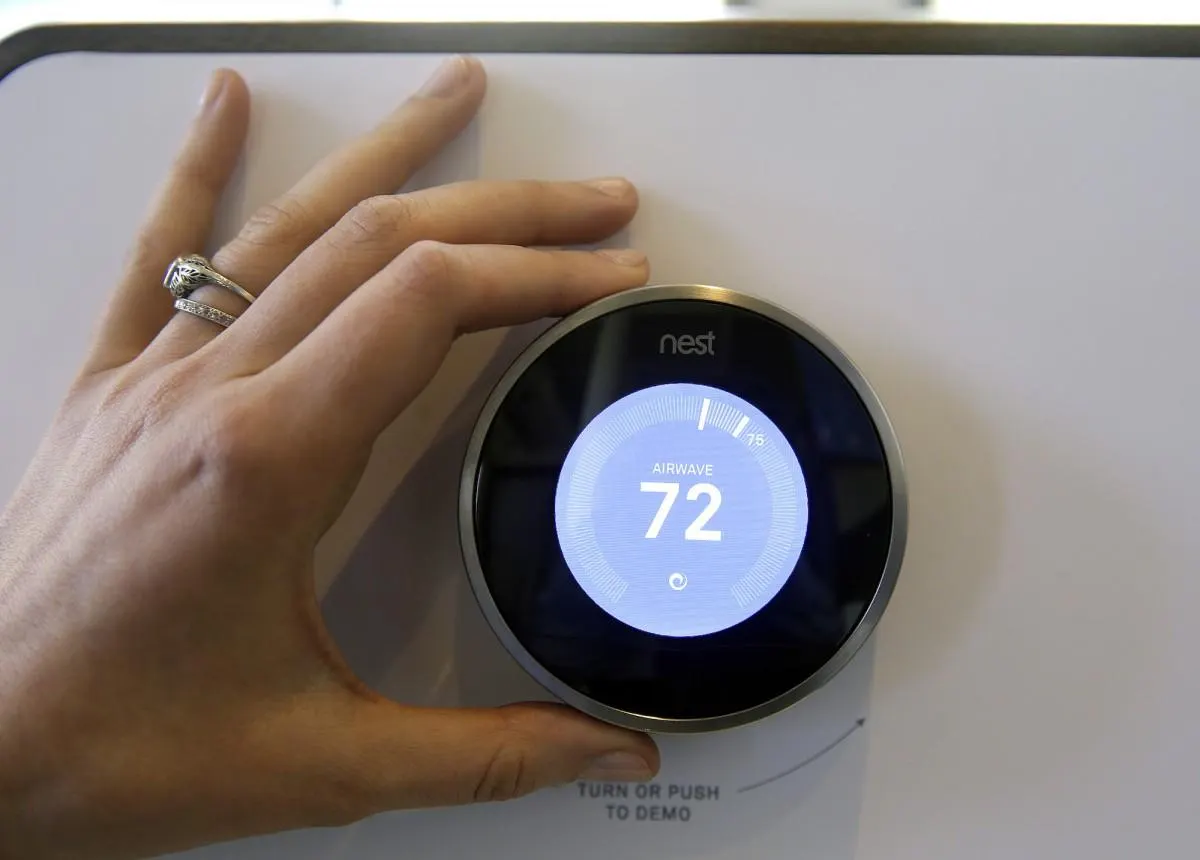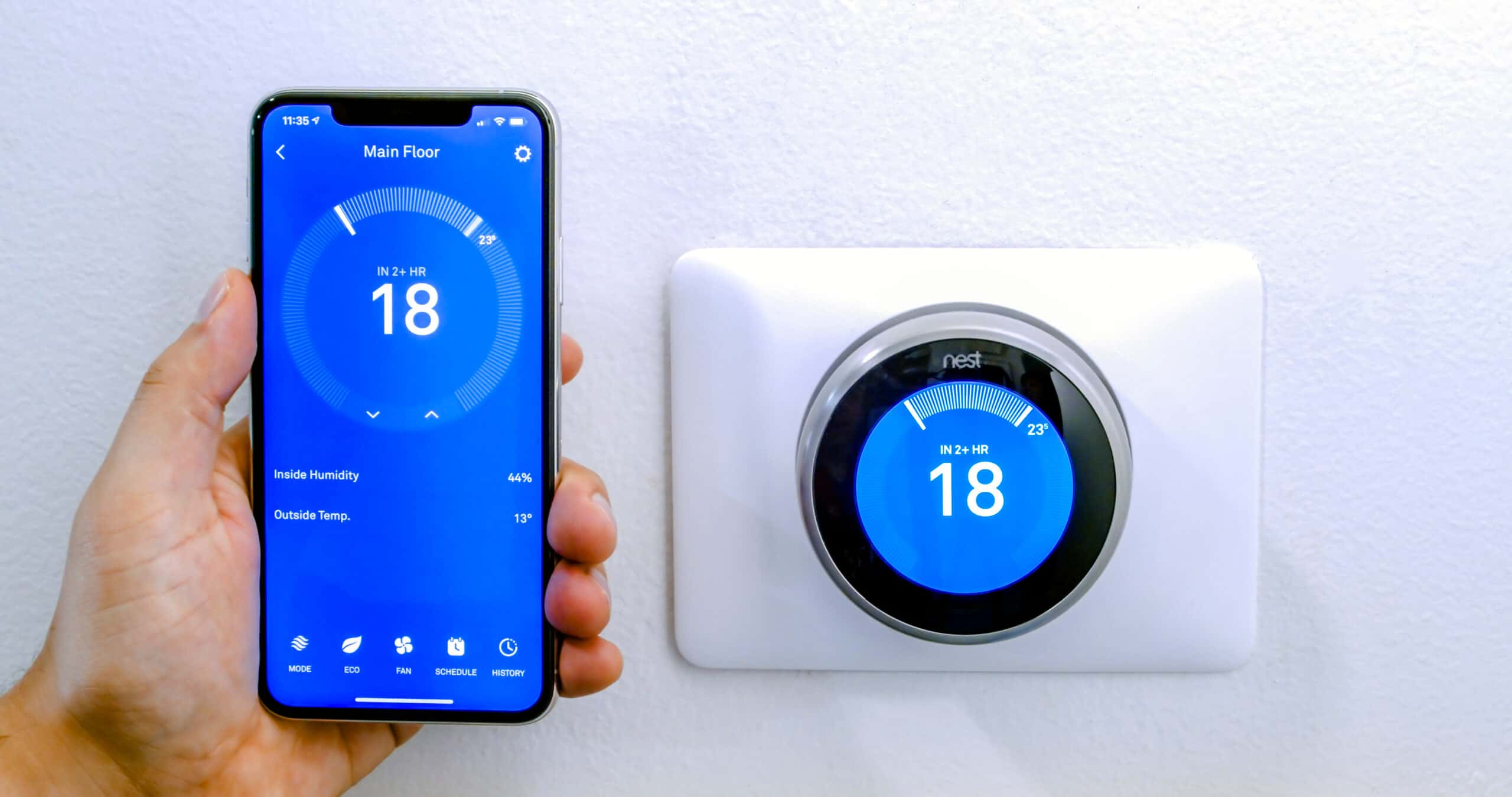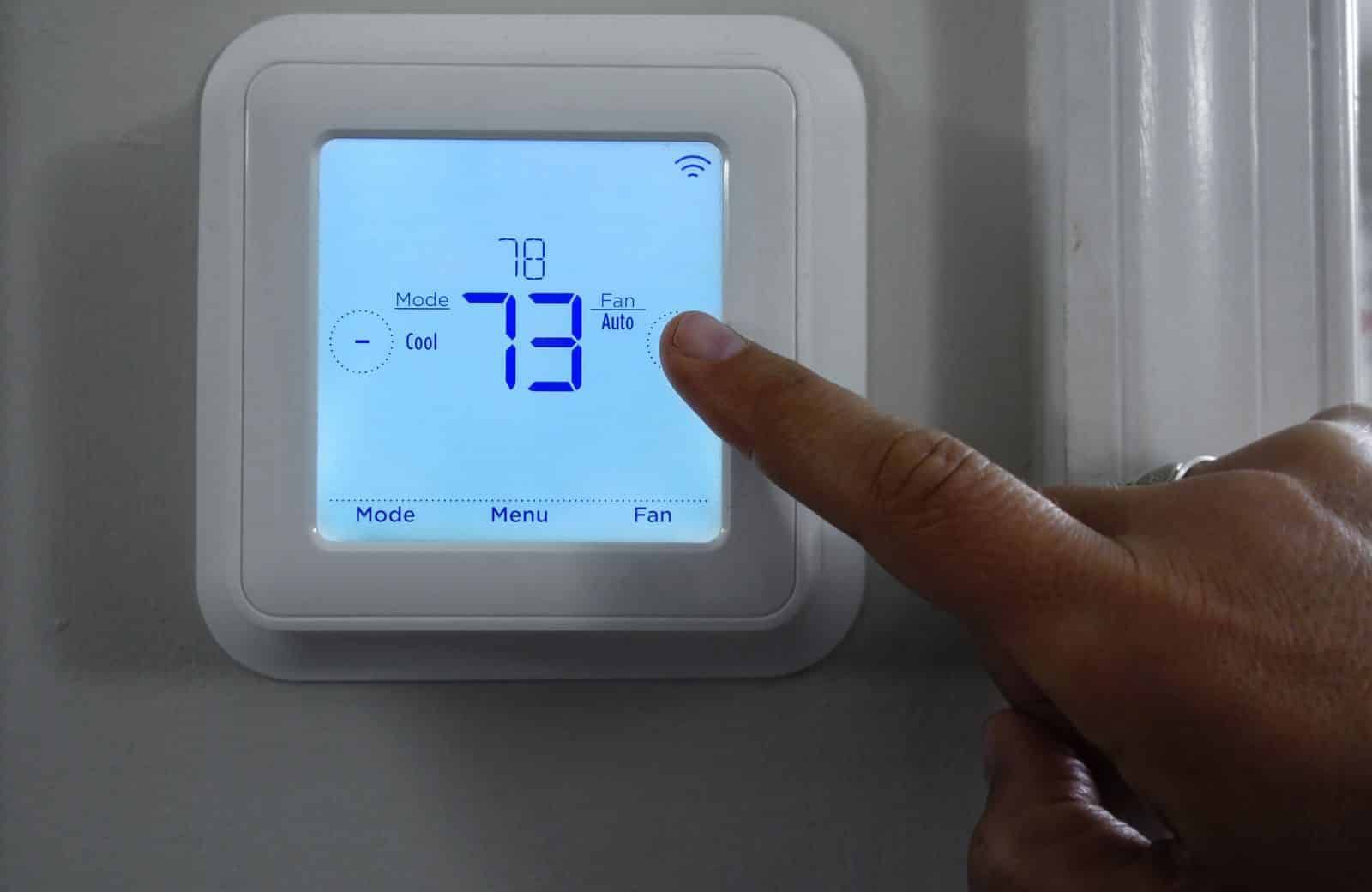Introduction
Welcome to the world of smart thermostats! In recent years, the rise of smart technology has extended into our homes, revolutionizing the way we interact with household appliances, including our thermostats. A smart thermostat offers an array of benefits, making it a must-have device for modern apartment living.
Gone are the days of manually adjusting your thermostat and wasting energy when you’re not at home. With a smart thermostat, you can effortlessly control the temperature of your apartment from anywhere, using your smartphone or tablet. Not only does this provide convenience, but it also allows you to save energy and reduce your carbon footprint.
But what exactly is a smart thermostat? Put simply, it’s a device that connects to your heating and cooling system, allowing you to remotely control and monitor the temperature of your apartment. It does this by connecting to your Wi-Fi network, enabling you to access the thermostat’s settings and features via a dedicated smartphone app.
The benefits of using a smart thermostat in your apartment extend beyond convenience and energy savings. These intelligent devices often come equipped with advanced features such as learning capabilities, energy usage reports, and compatibility with virtual assistants like Alexa or Google Assistant. This means you can control your thermostat with simple voice commands, making your life even easier.
In this article, we will explore the various benefits of using a smart thermostat in your apartment, as well as guide you through the installation process. We’ll also provide tips and tricks for maximizing energy efficiency and troubleshoot common issues that may arise. By the end of this article, you’ll be well-equipped to harness the power of a smart thermostat and improve your apartment living experience.
Benefits of Using a Smart Thermostat in an Apartment
Using a smart thermostat in your apartment offers a wide range of benefits that can make your life more comfortable, convenient, and energy-efficient. Let’s take a closer look at some of the key advantages of upgrading to a smart thermostat.
1. Energy Savings: One of the primary benefits of a smart thermostat is its ability to save energy and reduce utility bills. These devices employ advanced algorithms and sensors to learn your heating and cooling preferences, automatically adjusting the temperature when you’re away to avoid unnecessary energy consumption. You can also set up customized schedules to optimize energy usage based on your daily routine.
2. Remote Control: With a smart thermostat, you have complete control over your apartment’s temperature, even when you’re not at home. Using a smartphone app, you can easily adjust the temperature from anywhere, ensuring your apartment is comfortable by the time you arrive. Forget to turn off the heating before leaving? No problem. Simply use the app to switch it off remotely and save energy.
3. Enhanced Comfort: Smart thermostats go beyond basic temperature control. They offer features like zone-based heating and cooling, which allow you to set different temperatures for specific areas of your apartment. This ensures that each room is at the ideal temperature, providing personalized comfort for everyone.
4. Energy Usage Insights: Smart thermostats provide detailed energy usage reports, showing you exactly how much energy you’re consuming and when. This valuable information can help you make smarter decisions about your energy consumption and identify areas where you can make improvements. By being more aware of your energy usage patterns, you can strive for greater efficiency and reduce your environmental impact.
5. Integration with Smart Home Devices: If you have other smart home devices like smart lights or smart plugs, a smart thermostat can integrate with them seamlessly. For example, you can set up a “Goodbye” routine that turns off the lights and adjusts the temperature when you leave the apartment. This level of automation not only enhances convenience but also contributes to energy savings.
6. Easy Installation: Installing a smart thermostat in your apartment is a relatively simple process, and most models come with user-friendly instructions. You don’t need any specialized technical skills or tools to get started. Simply follow the step-by-step guide, and you’ll have your smart thermostat up and running in no time.
By leveraging the power of smart technology, a smart thermostat can provide numerous benefits for apartment dwellers. From energy savings and remote control to enhanced comfort and valuable energy insights, these devices are a game-changer in optimizing your apartment’s temperature and reducing your environmental impact.
How to Install a Smart Thermostat in an Apartment
Installing a smart thermostat in your apartment is a straightforward process that can be completed in just a few steps. Whether you’re a tech-savvy individual or a beginner, you can easily upgrade your thermostat with the following guide:
1. Turn off the Power: Before you begin installation, it’s crucial to turn off the power to your HVAC system. Locate the circuit breaker box in your apartment and switch off the corresponding breaker that controls your heating and cooling system.
2. Remove the Old Thermostat: Carefully remove the cover of your existing thermostat and take note of the wires connected to it. Label each wire based on its corresponding terminal (e.g., R, W, G, Y) to ensure proper connection later on. Once labeled, disconnect the wires and remove the old thermostat from the wall.
3. Install the Baseplate: Take the baseplate of your smart thermostat and position it on the wall where the old thermostat was located. Use a level to ensure it’s straight, then mark the screw holes with a pencil. Next, drill holes into the marked spots and insert wall anchors if necessary. Attach the baseplate to the wall using the provided screws.
4. Connect the Wires: Take the labeled wires from the old thermostat and connect them to the corresponding terminals on the baseplate of the smart thermostat. Most smart thermostats have terminals labeled with letters or color codes to make the process easier. Follow the instructions provided with your specific thermostat model to ensure the correct wiring.
5. Attach the Thermostat: Once the wires are securely connected, gently attach the smart thermostat to the baseplate. Ensure that it is properly aligned and snaps into place. Some models require you to push down and twist to secure the thermostat to the baseplate.
6. Restore Power and Set Up: After the thermostat is securely attached, restore power to the HVAC system by switching the breaker on. The thermostat should power on, and you’ll be prompted to start the setup process. Follow the on-screen instructions to connect to your Wi-Fi network and configure the initial settings.
That’s it! You have successfully installed your smart thermostat in your apartment. Take a moment to familiarize yourself with the thermostat’s interface and explore the various settings and features available. Remember to refer to the user manual or online resources for more specific instructions related to your thermostat model.
Installation of a smart thermostat is a simple task that can greatly enhance your apartment living experience. With just a few steps, you can enjoy the convenience and energy savings that come with controlling your thermostat remotely and optimizing temperature settings based on your schedule and preferences.
Connecting and Syncing the Smart Thermostat with Your Smartphone
Once you have installed your smart thermostat in your apartment, the next step is to connect and sync it with your smartphone. This will allow you to control and monitor your thermostat remotely, providing you with unparalleled convenience. Follow these steps to connect your smart thermostat to your smartphone:
1. Download the App: Start by downloading the dedicated smartphone app for your smart thermostat. You can find the app in the App Store for iOS devices or the Google Play Store for Android devices. Make sure to download the correct app that corresponds to your thermostat brand and model.
2. Create an Account: Open the app and create an account if prompted. This involves providing your email address and creating a password. Some apps may require additional information, such as your name and location. Follow the on-screen instructions to complete the account creation process.
3. Connect to Wi-Fi: Ensure that your smartphone is connected to your home Wi-Fi network. Go to your phone’s Wi-Fi settings and connect to your network if you aren’t already connected. This step is essential as it allows your smartphone to communicate with the smart thermostat.
4. Pairing Process: Open the app on your smartphone and follow the instructions to pair your device with the smart thermostat. The pairing process may involve entering a unique code or scanning a QR code provided with your thermostat. Pay close attention to the instructions and follow them accurately to ensure successful pairing.
5. Syncing with Smart Home Systems: If you have other smart home devices or a smart home hub, you may have the option to sync your smart thermostat with them. This allows for centralized control and integration with other automation routines. Follow the app instructions to connect your smart thermostat with your smart home system if desired.
6. Test the Connection: Once the pairing process is complete, test the connection between your smartphone and the smart thermostat. Use the app to adjust the temperature, create schedules, or change settings. Check if the changes reflect on your smart thermostat’s display and ensure that the commands are being executed correctly.
Congratulations! You have successfully connected and synced your smart thermostat with your smartphone. Now you can enjoy the convenience of controlling your thermostat from anywhere using your smartphone. Take advantage of the app’s features, such as adjusting the temperature remotely, setting up schedules, and accessing energy usage reports.
Remember to keep your smartphone connected to the internet and ensure that the app is up to date to avoid any connectivity issues. If you encounter any difficulties during the connection process, consult the user manual or reach out to the manufacturer’s customer support for assistance.
Understanding the Settings and Features of the Smart Thermostat
To make the most of your smart thermostat in your apartment, it’s important to understand its settings and features. Each smart thermostat model may have slightly different options, but there are some common settings and features that you should familiarize yourself with. Here’s a breakdown of what to look for:
1. Temperature Control: The most fundamental setting of a smart thermostat is temperature control. You can easily adjust the desired temperature using the app on your smartphone or directly on the thermostat’s display. Many smart thermostats also offer the option to set different temperatures for specific times of the day or for different days of the week.
2. Scheduling: Scheduling is a powerful feature that allows you to automate your thermostat based on your daily routine. You can set the temperature to lower or higher when you’re away from home, and have it adjust to your preferred temperature just before you arrive. This not only ensures comfort but also helps save energy and reduce costs by avoiding unnecessary heating or cooling when not needed.
3. Learning Capabilities: Some smart thermostats come equipped with learning capabilities, where they analyze your behavior and adjust temperature settings accordingly. This means that over time, the thermostat will learn your preferences and create a personalized schedule for you. It’s a convenient feature that saves you time and effort in manually programming your thermostat.
4. Energy Usage Reports: Many smart thermostats provide detailed energy usage reports, showing you how much energy you’re consuming and when. These reports give you insights into your energy consumption patterns, helping you identify areas where you can make adjustments to save energy and lower your utility bills. Some thermostats even provide tips on how to improve efficiency.
5. Geofencing: Geofencing is a feature that uses your smartphone’s GPS to detect your location. With this feature enabled, your smart thermostat can adjust the temperature settings based on whether you’re home or away. When you’re within a predetermined radius, the thermostat can turn on the heating or cooling to ensure your home is comfortable when you arrive.
6. Integration with Smart Home Systems: If you have other smart home devices, some smart thermostats may offer integration options. This allows you to control your thermostat alongside other devices and create customized automation routines. For example, you can set up a routine that turns off the lights and adjusts the temperature when you say “Goodnight” to your voice assistant.
Take the time to explore the settings and features of your smart thermostat. Familiarize yourself with the available options and customize them according to your preferences and lifestyle. Experiment with different schedules, temperature settings, and automation routines to find what works best for you and your apartment.
Remember to refer to the user manual or online resources specific to your smart thermostat model for more details and instructions on using its settings and features. Should you have any questions or encounter any difficulties, don’t hesitate to reach out to the manufacturer’s customer support for assistance.
Creating a Schedule for Thermostat Settings
One of the key features of a smart thermostat is the ability to create customized schedules for your thermostat settings. By setting up a schedule, you can optimize energy usage, maximize comfort, and ensure that your apartment is always at the perfect temperature. Here are some steps to help you create an effective schedule for your smart thermostat:
1. Understand Your Routine: Take some time to evaluate your daily routine. Consider when you typically wake up, leave for work, come home, and go to bed. Understanding your routine will help you determine the ideal temperature settings for each part of the day.
2. Set Comfortable Temperature Levels: Determine the desired temperature for each time period of the day. This could include different settings for morning, daytime, evening, and night. Consider your personal preferences and any specific temperature needs for different activities in your apartment.
3. Adjust for Absence: If you’re away from your apartment for extended periods, such as during work hours or vacation, adjust the temperature accordingly. For energy efficiency, it’s recommended to set the temperature higher in the summer or lower in the winter when no one is home.
4. Utilize the Learning Capability: If your smart thermostat has learning capabilities, take advantage of this feature. Allow the thermostat to observe and adapt to your habits over time. It will learn your schedule and automatically adjust temperature settings without the need for manual input.
5. Consider Geofencing: If your thermostat supports geofencing, utilize this feature to align the temperature settings with your location. By setting a geofence radius around your apartment, the thermostat will know when you’re coming home and adjust the temperature accordingly, ensuring a comfortable environment upon your arrival.
6. Regularly Evaluate and Adjust: Regularly review and adjust your schedule to ensure it aligns with any changes in your routine or climate. For example, during seasons with milder weather, you may want to modify your schedule to optimize energy efficiency and reduce heating or cooling when it’s unnecessary.
Remember, the goal of creating a schedule for your smart thermostat is to balance comfort and energy efficiency. By carefully considering your routine and preferences, you can optimize the temperature in your apartment and reduce unnecessary energy consumption.
Refer to the user manual or online resources specific to your smart thermostat model for instructions on how to set up and modify schedules. Each thermostat may have slightly different procedures, so it’s important to follow the guidelines provided by the manufacturer.
By creating an effective schedule for your smart thermostat, you can enjoy a comfortable living environment while maximizing energy efficiency and reducing your energy costs. Take the time to customize your schedule and fine-tune it according to your needs—it will pay off in terms of energy savings and overall comfort in your apartment.
Tips and Tricks for Maximizing Energy Efficiency with a Smart Thermostat
A smart thermostat is a powerful tool for optimizing energy usage in your apartment. By following these tips and tricks, you can maximize the energy efficiency of your smart thermostat and reduce your environmental impact:
1. Set Temperature Wisely: Find a balance between comfort and energy efficiency by setting your thermostat temperature a few degrees lower in the winter and a few degrees higher in the summer. Even a small adjustment can make a significant difference in energy savings over time.
2. Utilize Temperature Ranges: Instead of setting a specific temperature, consider using temperature ranges. For example, you can set your thermostat to a range of 68-72°F (20-22°C) in the winter and 74-78°F (23-26°C) in the summer. This gives your smart thermostat more flexibility and allows it to optimize energy usage based on the current conditions.
3. Take Advantage of Schedules: Create a schedule that matches your daily routine and adjusts the temperature according to your presence or absence. This ensures that your apartment is comfortable when you’re there and saves energy when you’re away.
4. Use Geofencing: Enable the geofencing feature of your smart thermostat, if available. This feature uses your smartphone’s location to automatically adjust the temperature based on whether you’re at home or away. It ensures your apartment is comfortable when you arrive while conserving energy when you’re not there.
5. Consider Zoning: If your apartment has multiple zones or rooms with different heating and cooling needs, take advantage of your smart thermostat’s zoning capabilities. By setting different temperatures for each zone, you can optimize comfort and reduce energy waste in unused areas.
6. Monitor Energy Usage: Regularly check the energy usage reports provided by your smart thermostat. Pay attention to any trends or patterns that may indicate excessive energy consumption. This information can help you identify areas for improvement and make adjustments to further enhance energy efficiency.
7. Take Advantage of Automation: Integrate your smart thermostat with other smart home devices to create automation routines. For example, you can set up a routine that turns off the thermostat when you leave the apartment or adjust the temperature based on sensor readings or weather forecasts. Automation streamlines energy efficiency efforts and ensures that your thermostat adapts to changing conditions seamlessly.
8. Utilize Smart Assistant Integration: If your smart thermostat integrates with virtual assistants like Alexa or Google Assistant, take advantage of voice control. This allows you to adjust temperature settings with simple voice commands, providing added convenience and reducing the need to rely solely on your smartphone.
By implementing these tips and tricks, you can optimize the energy efficiency of your smart thermostat and make a positive impact on both the environment and your energy bills. Remember, small adjustments and conscious energy management can go a long way in reducing energy consumption and promoting sustainable living in your apartment.
Troubleshooting Common Issues with the Smart Thermostat
While smart thermostats are designed to be user-friendly and efficient, occasionally, you may encounter some issues. Here are some common problems you may encounter with your smart thermostat and troubleshooting tips to resolve them:
1. Connectivity Issues: If you’re experiencing connectivity issues between your smart thermostat and your smartphone or Wi-Fi network, the first step is to check your internet connection. Ensure that your Wi-Fi network is working properly and that the signal strength is strong enough for the thermostat to connect. Try restarting your router and the smart thermostat to establish a fresh connection.
2. Incorrect Temperature Reading: If your smart thermostat is displaying an incorrect temperature reading, it may be due to sensor placement or calibration issues. Ensure that the sensor is not affected by direct sunlight, drafts, or other heat sources. You can also try recalibrating the thermostat by following the manufacturer’s instructions for your specific model.
3. Unresponsive Display: If the display of your smart thermostat is not responding or is frozen, attempt a hard reset. This typically involves removing the thermostat from its base for a few moments and then reattaching it. If the problem persists, check for any firmware updates for your thermostat model and install them as necessary.
4. Programming Difficulties: If you’re having trouble programming your smart thermostat or creating schedules, refer to the user manual or online resources for detailed instructions. Make sure you understand the programming options and settings available with your thermostat model. If needed, contact the manufacturer’s customer support for further assistance.
5. Inconsistent Heating or Cooling: If your smart thermostat is not consistently heating or cooling your apartment to the desired temperature, check the settings and ensure they are programmed correctly. Additionally, make sure that the HVAC system is functioning correctly and that the filters are clean. If the problem persists, consult with a professional HVAC technician to diagnose and address any underlying issues.
6. Battery Issues: Some smart thermostats are battery-powered or have backup batteries. If you notice that your thermostat is not working or displaying a low battery warning, replace the batteries as instructed by the manufacturer. Make sure to use the recommended battery type and follow the correct installation procedures.
7. Compatibility Problems: If you recently upgraded your HVAC system or are experiencing compatibility issues with your smart thermostat, double-check the thermostat’s compatibility with your specific system. Refer to the manufacturer’s documentation or website for a list of compatible systems or consult with a professional HVAC technician for assistance.
If you’ve exhausted these troubleshooting tips and are still experiencing issues, it is recommended to contact the manufacturer’s customer support. They will be able to provide specific troubleshooting steps for your smart thermostat model and assist you in resolving any persistent issues.
Remember, proper maintenance and regular updates are essential for optimal performance of your smart thermostat. Ensure that you follow manufacturer recommendations for firmware updates, sensor calibration, and battery replacement, if applicable, to minimize any potential issues and keep your smart thermostat running smoothly in your apartment.
Conclusion
In conclusion, a smart thermostat brings a multitude of benefits to apartment living. Beyond convenience and ease of use, it allows you to optimize energy efficiency, reduce utility bills, and enhance comfort. By remotely controlling your thermostat, creating customized schedules, and taking advantage of advanced features like learning capabilities and integration with other smart devices, you can transform your apartment into a smart, energy-efficient haven.
Installing a smart thermostat in your apartment is a straightforward process that requires minimal technical skills. Once installed, connecting and syncing it with your smartphone opens up a whole new world of control and convenience. You can monitor and adjust the temperature from anywhere, create energy-saving schedules, and even integrate it with other smart home systems for seamless automation.
Understanding the various settings and features of your smart thermostat is essential to harness its full potential. By setting temperature ranges, utilizing scheduling and geofencing features, and regularly evaluating your energy usage, you can maximize energy efficiency and reduce your environmental impact.
Troubleshooting any issues that may arise with your smart thermostat is crucial to ensure uninterrupted performance. By following the appropriate troubleshooting steps, addressing connectivity or functionality concerns, and seeking assistance when needed, you can quickly resolve common problems and maintain optimal functionality.
By adopting the tips and tricks provided in this article, you can fully optimize your smart thermostat to make your apartment more comfortable and energy-efficient. Remember to regularly evaluate and adjust your settings, take advantage of automation and integration capabilities, and stay proactive in maintaining your smart thermostat.
Investing in a smart thermostat is not only a smart choice for your apartment, but also for the environment. By reducing energy consumption and optimizing heating and cooling efficiency, you contribute to a greener future while enjoying the benefits of modern technology.
So, go ahead and take the plunge into the world of smart thermostats. Enhance your apartment living experience, save money on energy bills, and make a difference in the world, all with the power of a smart thermostat.







